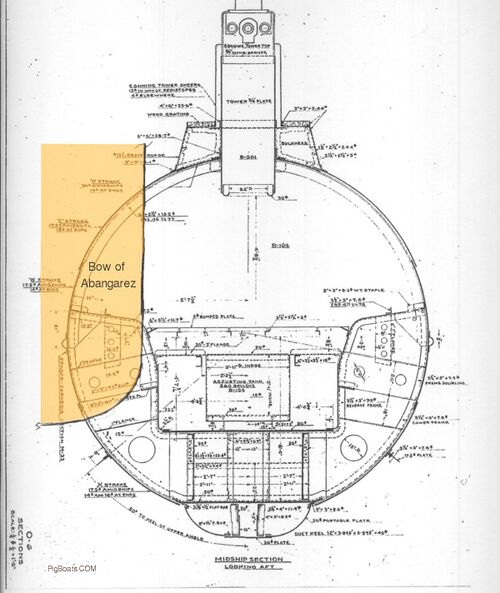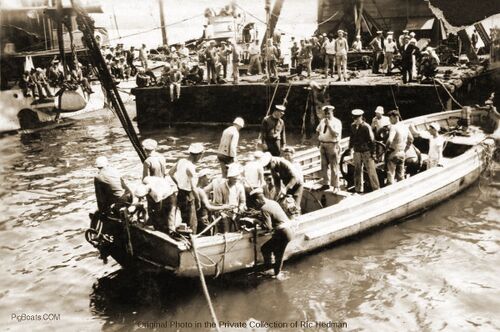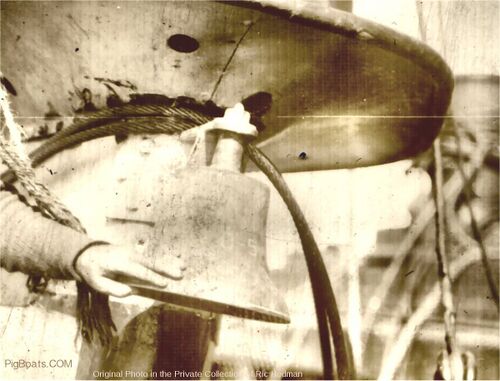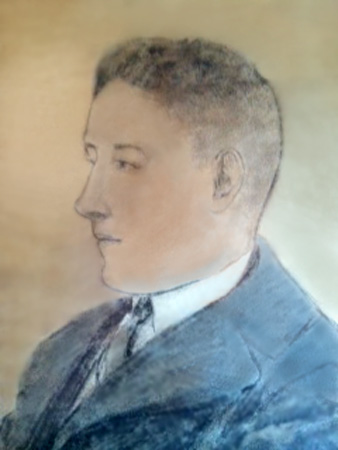O-5 collision

National Archives photo.

This is a cross section of an O-class submarine in the control room. Ric Hedman superimposed an image of the shape of the Abangarez's bow to illustrate how far she penetrated into the pressure hull. The hole was ten feet long and three feet wide and penetrated to a depth of forty inches into the hull. Along with the pressure hull in the control room, the main ballast tank was also damaged, making it impossible for the boat to stay afloat.
Photo in the private collection of Ric Hedman.

This is the floating crane barge Ajax, built specifically to lift the huge gates of the Panama Canal locks and one of the largest floating cranes in the world. At the time of the collision, the Ajax was working a land slide in the Culebra Cut in the canal and was on the Pacific side of the slide. Thus she was unable to immediately respond. The dredging work was thrown into high gear and the slide was cleared enough so that the Ajax could be moved to the collision site. Once she got to the site cables were rigged under the bow of the submarine and three attempts were made to lift it to the surface. The first two attempts failed when the cables snapped. The salvage team gained buoyancy by blowing water from the O-5's engine room, and the third attempt was successful. In this photo the bow of the O-5 can just be seen at the waterline below the crane gantry. Photo in the private collection of Ric Hedman.

The O-5 operation was a combined effort of both Navy and civilian canal employees. This photo shows a diving boat moored over the wreck site. A diver is preparing to go down the ladder and into the water. The water depth was only 42 feet and it was quite warm so the diver was using a standard Mk 5 diving helmet in shallow water mode, with the helmet and breast plate simply resting on his shoulders with no rubberized diving suit or weights. The helmet can be seen just to the right of the diver on the ladder. Once he was in the water the helmet would be lowered over his head. Further to the right several men are standing around the air pump, ready to man the two large handwheels that would be repeatedly cranked around to provide air for the diver. The boat is moored at the bow of the crane barge Ajax, and there are two other O-class submarines in the background. This was an urgent and somewhat frantic affair, as the men topside knew that there were two men trapped below whose time was running out.
Photo in the private collection of Ric Hedman.

After 31 hours of intense effort, the bow of the O-5 was lifted to the surface on the third attempt. Brown and Breault are being helped to the small boat alongside, with anxious Navy and civilian personnel standing by to the right and on the Ajax. Submarine chaser SC-285 is standing by in the background.
Lost in the sinking were Clyde Edward Hughes, Motor Machinist's Mate 1st Class; Thomas Theodore Metzler, Fireman 1st Class, and Fred C. Smith, Mess Attendant 1st Class. The bodies of Metzler and Smith were found two days later floating off the Colon breakwater. Hughes' body was never found. Rest in peace shipmates.
U.S. Navy photo.







Page created by:
Ric Hedman & David Johnston
1999 - 2023 - PigBoats.COM©
Mountlake Terrace, WA, Norfolk, VA
webmaster at pigboats dot com
